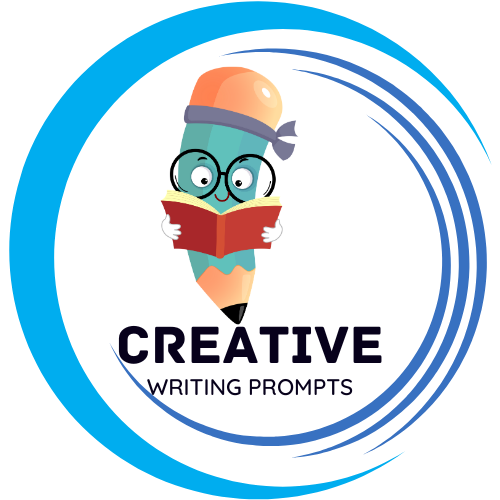Are you eager to dive into the world of copywriting but not sure where to start? Look no further! In this article, we have compiled a list of the best books for learning copywriting that are essential for beginners. Whether you are looking to sharpen your skills or completely new to the field, these books will provide you with the knowledge and techniques needed to become a successful copywriter. So, grab a cup of coffee, cozy up with these essential reads, and get ready to take your writing to the next level!
Contents
- – Understanding the Fundamentals: Copywriting Essentials for Beginners
- – Crafting Compelling Copy: Techniques and Strategies for Success
- – Mastering Persuasion: Psychology of Influence in Copywriting
- – Copywriting for Different Platforms: Online, Print, and More
- – Building Your Copywriting Toolbox: Must-Have Resources for Beginners
- – Learning from the Pros: Copywriting Books by Industry Experts
- – Perfecting Your Pitch: Strategies for Effective Copywriting
- – Practical Exercises: Putting Copywriting Theory into Practice
- Frequently Asked Questions
- Key Takeaways
– Understanding the Fundamentals: Copywriting Essentials for Beginners
When it comes to copywriting, there are essential fundamentals that every beginner should grasp to be successful in the field. Understanding the basics will help you create compelling content that grabs the reader’s attention and drives them to take action.
One key aspect of copywriting is knowing your target audience. **Identifying** who you are writing for will help you tailor your message to resonate with them, increasing the chances of conversion. Additionally, learning how to craft a captivating headline is crucial in grabbing the reader’s attention and enticing them to continue reading your copy.
– Crafting Compelling Copy: Techniques and Strategies for Success
Crafting compelling copy is an art form that requires a combination of creativity, strategy, and attention to detail. To create copy that captivates your audience, consider incorporating these techniques and strategies into your writing:
Understand your audience: Before putting pen to paper, take the time to research and understand your target audience. What are their pain points, desires, and interests? Tailoring your copy to resonate with your audience will increase engagement and drive conversions.Utilize storytelling: Humans are naturally drawn to stories, so incorporating storytelling elements into your copy can make it more engaging and memorable. Use anecdotes, case studies, or testimonials to bring your message to life and create a connection with your readers.
In addition to these techniques, it’s crucial to focus on clarity, relevance, and authenticity in your copywriting. By combining these elements with a sprinkle of creativity, your copy has the potential to stand out and make a lasting impact on your audience. Start implementing these strategies today and watch your writing skills soar.
– Mastering Persuasion: Psychology of Influence in Copywriting
In the realm of copywriting, understanding the psychology of influence is paramount. By mastering the art of persuasion, copywriters can strategically craft messages that resonate with their target audience and drive them to take action. Utilizing psychological principles in copywriting can greatly enhance the effectiveness of your content and help you achieve your desired goals.
One key aspect of mastering persuasion in copywriting is tapping into the emotions of your audience. By appealing to their emotions, such as fear, joy, or desire, you can create a strong connection with your readers and persuade them to engage with your content. Additionally, understanding cognitive biases can help you influence decision-making and sway opinions in your favor. By utilizing techniques such as social proof, scarcity, and reciprocity, you can effectively persuade your audience to trust your message and take the desired action.
– Copywriting for Different Platforms: Online, Print, and More
When it comes to copywriting, it’s essential to tailor your content to the specific platform you are using. Online platforms like websites and social media require concise and engaging copy that grabs the reader’s attention quickly. Utilize bold headlines, bullet points, and short paragraphs to keep your audience engaged and interested in what you have to say.
Print platforms, on the other hand, allow for more creative freedom with longer-form content. Use storytelling techniques, vivid imagery, and descriptive language to capture the reader’s imagination and create a lasting impression. Remember to consider the physical layout of the page and how your copy will be presented alongside visuals or other elements.
– Building Your Copywriting Toolbox: Must-Have Resources for Beginners
When delving into the world of copywriting, having the right resources at your fingertips can make all the difference in creating compelling content. One essential tool to have in your toolbox is a reliable grammar checker, such as Grammarly or Hemingway Editor. These tools can help ensure your writing is error-free and easy to read, enhancing the overall quality of your copy.
Another valuable resource for beginners is a headline analyzer, like CoSchedule’s Headline Analyzer or Sharethrough’s Headline Tool. Crafting attention-grabbing headlines is crucial in capturing the reader’s interest, and these tools can provide insights on how to make your headlines more engaging and effective. Additionally, investing in a style guide, such as the AP Stylebook or the Chicago Manual of Style, can help you maintain consistency and professionalism in your writing.
– Learning from the Pros: Copywriting Books by Industry Experts
Delve into the world of copywriting with these recommended books written by industry experts. Discover insider tips, tricks, and techniques that can elevate your writing to the next level.
Learn from the pros themselves as they share their wisdom and experience in crafting compelling copy that engages and persuades. Whether you’re a seasoned copywriter or just starting out, these books are sure to inspire and educate you on the art of persuasive writing.
– Perfecting Your Pitch: Strategies for Effective Copywriting
When it comes to creating compelling copy that sells, mastering the art of pitching is crucial. Here are some strategies to help you perfect your pitch and improve your copywriting skills:
- Know your audience: Before crafting your pitch, make sure you understand who your target audience is. Tailor your message to resonate with their needs, preferences, and pain points.
- Focus on benefits: Highlight the advantages and solutions your product or service offers. Clearly communicate how it can improve the lives of your audience and solve their problems.
- Use storytelling: Engage your audience with a compelling narrative that captures their attention and makes your message more memorable.
– Practical Exercises: Putting Copywriting Theory into Practice
Now that you’ve learned the basics of copywriting theory, it’s time to put that knowledge to work with some practical exercises. These exercises will help you apply what you’ve learned and develop your skills as a copywriter.
Here are a few exercises to get you started:
- Write a Product Description: Choose a product that you love and write a compelling product description that highlights its features and benefits. Focus on engaging the reader and persuading them to make a purchase.
- Create a Brand Slogan: Think of a catchy and memorable slogan for a fictional brand. Your slogan should be concise, memorable, and reflect the brand’s values and personality.
- Write a Sales Email: Craft a persuasive sales email for a fictional product or service. Use attention-grabbing subject lines, clear calls to action, and persuasive language to convince the reader to take the desired action.
Frequently Asked Questions
Q: What are the best books for beginners looking to learn copywriting?
A: Some essential reads for aspiring copywriters include “Hey, Whipple, Squeeze This” by Luke Sullivan, ”Breakthrough Advertising” by Eugene Schwartz, and “The Copywriter’s Handbook” by Robert Bly.
Q: Why are these books recommended for beginners?
A: These books are recommended because they provide foundational knowledge and practical tips on writing persuasive copy, understanding consumer psychology, and creating effective advertising campaigns.
Q: Are there any specific books that focus on writing compelling headlines?
A: Yes, “Tested Advertising Methods” by John Caples and “Ogilvy on Advertising” by David Ogilvy both offer valuable insights on writing attention-grabbing headlines that drive engagement.
Q: Are there any resources in these books for learning about digital copywriting?
A: Yes, “Cashvertising” by Drew Eric Whitman and “The Adweek Copywriting Handbook” by Joseph Sugarman both cover digital copywriting techniques and strategies for online advertising campaigns.
Q: Can these books help someone looking to start a career in copywriting?
A: Absolutely! These books provide a solid foundation in copywriting principles and techniques that can be applied to various industries and jobs within the field of advertising and marketing.
Key Takeaways
In conclusion, these recommended books provide a valuable foundation for anyone looking to start a career in copywriting. Happy reading and writing!








